IAC News
IAC News No.135, January 2024
Japan Society of Civil Engineers International Activities Center January 15, 2024 IAC News No.135
The IAC News introduces significant and unique international projects, technologies, symposium, communication undertaken by JSCE IAC, International Section, ACECC, and Research & Development Section with over 30 committees, state-of-art- civil engineering technologies and projects, great and interesting achievements of civil engineer and researcher once a month.
In the afternoon of January 1, 2024, M. 7.5 earthquake hit the Noto Peninsula area of Ishikawa Prefecture, causing extensive damages on the Peninsula. JSCE would like to express our deepest condolences and sympathy to all those who have affected by the massive earthquake. We are gathering information regarding the damages caused by it, and sharing it on the JSCE website to be used for the relife, recovery and reconstruction services. <https://committees.jsce.or.jp/report/node/224 > 、<https://committees.jsce.or.jp/report/>
New Year’s Address from the JSCE President
 Shigeyoshi Tanaka
Shigeyoshi Tanaka
(111th President of the
Japan Society of Civil
Engineers)
In 2024, the role of civil engineering will become more important than ever before, with efforts to make Japan more resilient against natural disasters, installing infrastructure for a society undergoing a declining birthrate and aging population, and contributing to achieving carbon neutrality. Creating an environment in which people thrive is a key mission of civil engineering, and our activities as an academic society must be based on this mission.
JSCE will celebrate its 110th anniversary on November 18, 2024. The 110th Anniversary Project Committee has currently started activities. Led by the Planning Committee Meeting, efforts are also underway for the formulation of JSCE2025 (provisional name), which is JSCE’s new five-year plan.
At the events celebrating the 50th anniversary of CICHE in Taiwan, a forum of an organization called the Asian Civil Engineering Coordinating Council (ACECC) made up of civil engineering-related academic societies from 17 mainly Asian countries and regions was held, and this proved to be a valuable opportunity to interact with the societies of each country (Photo 1, Photo 2).
During my keynote speech, I discussed my project as president, “Improving the Appeal of Civil Engineering,” and believe it received the backing of the counterparts of each country.
Also, between November 13 and November 15 of this year, EASEC-18 (The Eighteenth East Asia-Pacific Conference on Structural Engineering and Construction) will be held in Chiang Mai, Thailand. I also plan to make a keynote speech here where I will discuss the evolution and innovation of civil engineering technology in Japan.
One thing I have felt through these efforts is that, in order to make the world aware of JSCE’s presence and role, it is important to constantly share JSCE’s views on things that are happening, and that it is essential that we make our presence known with the daily grassroots activities of each branch and not just the headquarters. I also once again recognized the need for international exchange. I think that creating a framework where not just some but many members can experience international exchange will also lead to improving the appeal of civil engineering.
I truly feel that efforts to improve the appeal of civil engineering and increase its status are, slowly but surely, taking root.
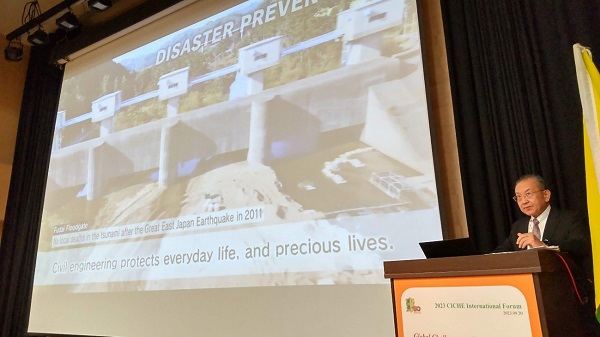
Photo 1 Making a Keynote Speech
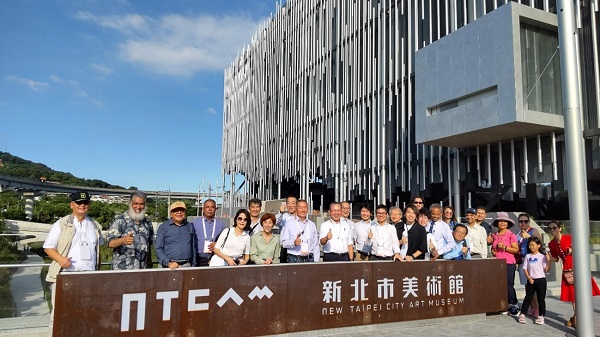
Photo 2 Technical Tour with Representatives of Partner Societies from Various Countries and Regions
Expressway Renovation Project By NEXCO-East

Yasuaki Kiyota
(East Nippon Expressway Company Limited)
1. Introduction
Of the expressways managed by East Nippon Expressway Company Limited, in 2030, 20% of them will be 50 years or older, while in 2050, this percentage will increase to over 70%. Structures such as bridges and tunnels in particular are undergoing significant deformation. While the main causes of this premature aging are varied, such as an increase in large vehicle traffic and the impact of antifreeze, for expressways to fulfill their role as important traffic routes in Japan by continuing to support social infrastructure, in fiscal 2015, a project was launched for large-scale renovation and repairs to road structures.
In order for drivers to accurately and clearly understand the necessity of this large-scale renovation and repair project, each expressway company within the NEXCO Group uses the same “Expressway Renovation Project” name and logo. (Figure 1)
2. Details of Construction Work
While the construction work of the renovation project varies according to the parts suffering deformation, the main work includes replacing the slabs, work to make the slabs waterproof, reinforcing the girders, installing inverts, and performing ground anchorage work (Figure 2).
3. Reducing the Impact on Drivers
In undertaking the construction work, especially in replacing the slabs and installing the inverts, it is necessary to implement an entire cross-sectional construction approach in which work is carried out by turning either the inbound lanes or the outbound lanes into opposing traffic lanes without a physical separation between them. There are concerns that by doing this congestion will occur in areas with large volumes of traffic. That is why we are currently engaged in efforts to minimize the impact on drivers by examining construction methods to ensure the right number of traffic lanes.
In the programs, the activity of scooping up bouncy balls floating in the water by using a remote-controlled toy version of a piece of heavy construction machinery was said to be interesting by over 50% of children.
As an example of these efforts, in routes with different peak traffic volumes in the inbound and outbound directions, we are changing the number of traffic lanes in the mornings and evenings using the Road Zipper System*. (Figure 3, Photo 1)
(*Road Zipper System: A system that moves the installation position of concrete guardrails by using a dedicated barrier transfer machine (BTM). It can freely and safely change the width of lane dividers for construction work lanes.)
4. Conclusion
At the same time as the renovation project that is currently in progress, a regular inspection that is carried out once every five years was implemented together with a detailed survey thanks to the advancement of inspection technologies. Now that it has become possible to ascertain the degradation of the inside of the structures, new degradation phenomena have been observed. As significant deformation was observed concerning these phenomena, a NEXCO (East Nippon Expressway, Central Nippon Expressway, and West Nippon Expressway) Renovation Plan (outline) was drawn up for these additional areas that require renovation work. This plan was published in January 2023.
We will undertake this large-scale renovation and repair project appropriately in order for expressways to continue to fulfill their role.
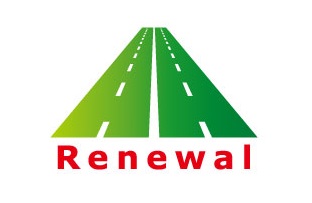
Figure 1 Expressway Renovation Project Logo
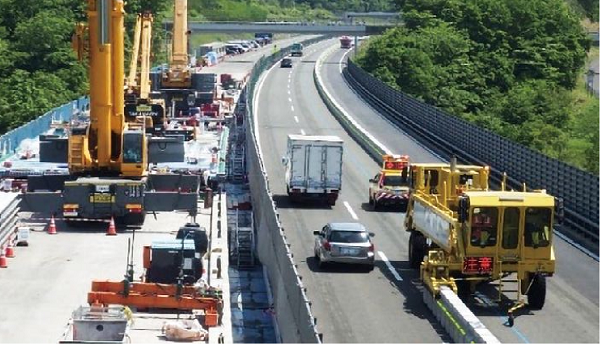
Photo 1 Changing Number of Traffic Lanes with Road Zipper System

Figure 2 Details of Construction Work
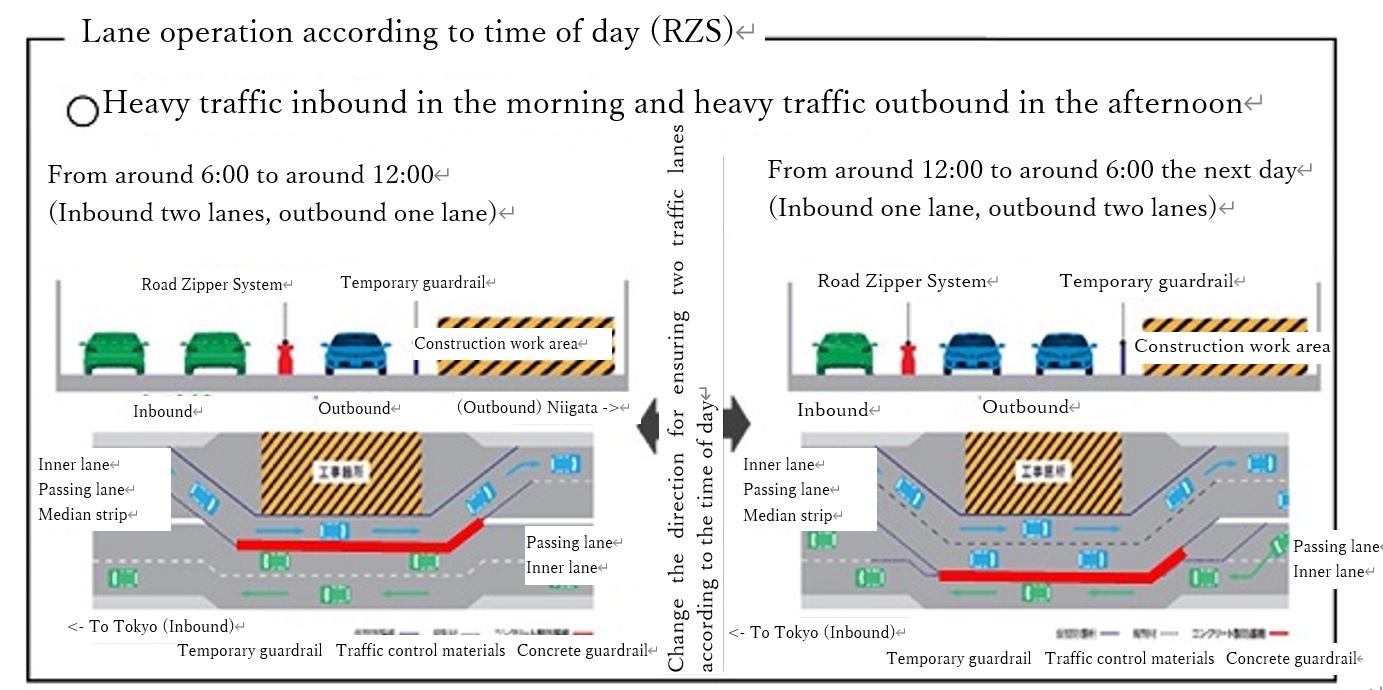
Figure 3 Road Zipper System
【Reported by Yasuaki Kiyota, General Manager, Maintenance Section, Maintenance Department,
Management Business Headquarters, East Nippon Expressway Company Limited】
The 27th World Road Congress in Prague, the Czech Republic
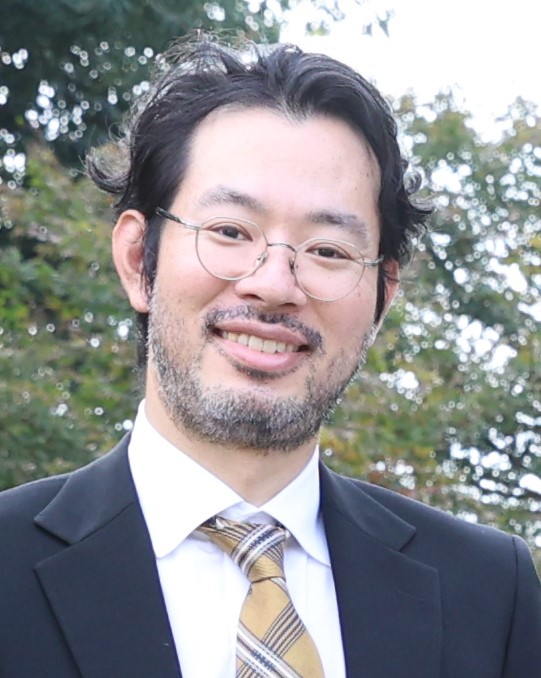
Yoshinori Kitaguchi
(Japan International Cooperation Agency)
From Monday, October 2 to Friday, October 6, 2023, the 27th World Road Congress was held in Prague, the Czech Republic. The Japan International Cooperation Agency (JICA) set up a booth at the Japan Pavilion
The World Road Congress, which JICA exhibited at on this occasion, is an international conference held once every four years by PIARC (World Road Association). It is an event that focuses not on the presenting of academic research findings but on the “practical technical exchange” of those involved in the road sector.
On the first day, October 2, Japanese calligraphy artist Shinrei opened the Japan Pavilion in style with a calligraphy performance. This was followed by swarms of road sector professionals from all over the world coming to visit the Japan Pavilion. If you are interested in seeing what it was like at the Japan Pavilion, there are photos published on the Japan Road Association website, so please take a look (https://www.road.or.jp/prague_after/index.html).
The JICA booth aimed to introduce its Road Asset Management Platform (RAMP), which it has established in the last few years. RAMP was set up in 2017 to develop core human resources in developing countries that will lead the road asset management field. With cooperation from many partners from the worlds of industry, academia, and government in Japan, RAMP strives to effectively and efficiently provide various kinds of support such as technical cooperation projects, short-term training, and study abroad programs for international students (master’s/doctoral students). In its study abroad programs, RAMP has welcomed 81 international students from 17 countries so far, producing countless individuals engaged in efforts to further spread technical skills within the respective countries as well as develop the next generation of engineers.
During the World Road Congress, counterparts of technical cooperation projects and the like dropped by the JICA booth, allowing booth members to successfully showcase RAMP to road sector professionals from all over the world. I broke into a cold sweat when the Minister of Transport for Tonga dropped by on the first day and asked, “Could I get a larger fund?” I carefully explained to him that I was not in a position to answer that question, but I was able to make the most of the opportunity to introduce RAMP to him. I also learned from our counterparts in Kenya and the like that ‘the state of road surfaces has improved thanks to the JICA project’ and that ‘we are pushing forward with initiatives domestically with former trainees leading the line’. I was able to actually hear firsthand that conditions have improved locally, as well as reaffirm that we have built strong trusting relationships with our counterparts with the help of all our experts.
Through not only manning the booth but also attending the various technical sessions held during the conference, I was able to experience the international trends in the road sector away from road asset management (a focus on achieving carbon neutrality by 2050 and a heightened emphasis on traffic safety), as well as learn of the latest knowledge and technologies and how they are being applied (the use of satellite images to assess the condition of bridges, public-private partnerships (PPPs), etc.). It was a truly fantastic opportunity to take another look at the roles and vision of JICA and RAMP on the global stage.
The Japan Pavilion was apparently home to a record number 38 booths from Japanese companies and the like. Booths were set up by individuals with a background as a Japan Overseas Cooperation Volunteer, as well as many companies promoting Official Development Assistance (ODA) projects as initiatives overseas. This confirmed my belief that ODA projects and JICA play a key role in the road sector internationally.
JICA will continue to pour its efforts into supporting the road asset management field in developing countries. Thank you for your continued support and cooperation!

Partnership System of the Road Asset Management Platform
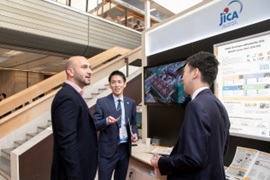
The JICA Booth
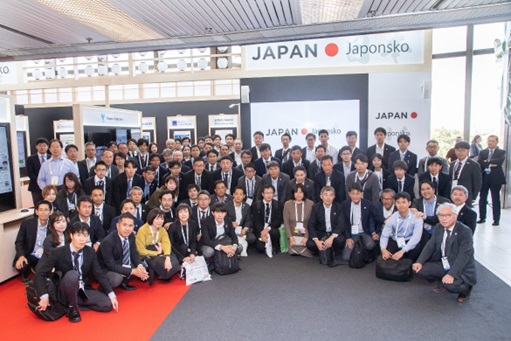
Japan Pavilion Exhibitors
【Reported by Yoshinori Kitaguchi, Team 1, Transportation Group,
Infrastructure Management Department, Japan International Cooperation Agency】
The 5th CICHE-JSCE Joint Workshop
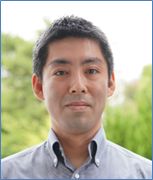
Hiromasa Iwai
(Assoc. Prof.,
Kyoto University)
The Fifth CICHE-JSCE Joint Workshop was held at Taipei Tech University in Taipei, Taiwan on September 20, 2023. With the Chinese Institute of Civil and Hydraulic Engineering (CICHE) celebrating its 50th anniversary this year, the third week of September was made a week to commemorate the 50th anniversary, and as part of the festivities, commemorative events were held throughout this seven-day period. This joint workshop was one of the commemorative events.
Under the main theme of “Civil Engineering on Green Energies,” presentations and discussions were conducted on topics related to the latest research and technological development trends, government policy investments, and asset management in the development of renewable energy that does not emit greenhouse gas. Guest speakers from JSCE included Naoto Kihara (Central Research Institute of Electric Power Industry), Reina Doi (JERA Energy Taiwan Co. Ltd.), Professor Daisaku Sakaguchi (Nagasaki University), and Hiromasa Iwai (Kyoto University). The presentations by CICHE were almost all about offshore wind power generation. In particular, there were lots of reports related to big projects involving collaboration between members from the worlds of industry, academia, and politics. I learned that offshore wind power generation in Taiwan is advancing rapidly.
Ever since the first workshop was held in Kaohsiung, Taiwan in 2016, the workshop has been held back and forth between Taiwan and Japan. The second workshop was held in Tokyo in 2017, the third workshop was held in Taichung in 2018, and the fourth workshop was held in Tokyo in 2019, with CICHE and JSCE each taking turns hosting the event. Due to the impact of the COVID-19 pandemic, the 2020, 2021, and 2022 workshops were postponed, with the fifth workshop being the first time that the event was held in four years. While many international conferences were held online during the pandemic, this workshop has remained fully focused on being held in person and thus chose to delay the workshop until it was possible to do so. While it was a long time coming, I strongly felt that being able to interact in person once again was down to CICHE’s perseverance and planning capabilities as the host of the event. I would like to say a heartfelt thank you to everyone who worked tirelessly to make the Fifth CICHE-JSCE Joint Workshop a success.
【Reported by Hiromasa Iwai, Graduate School of Engineering, Kyoto University】
ACECC’s 45th Executive Committee Meeting in Taipei, Taiwan and the 50th Anniversary Ceremony of CICHE
1. Overview
The Asian Civil Engineering Coordinating Council (ACECC) is an organization established in September 1999 to improve and develop sustainable social capital in the Asian region. At present, 17 academic societies are affiliated with the ACECC, with the organization engaged in various activities to promote learning and skills with the cooperation of civil engineering-related academic societies. The 45th Executive Committee Meeting (ECM), which is the highest-level decision-making body of the ACECC and is held twice a year by member academic societies on a rotating basis, took place on September 18 and 19 in Taipei, Taiwan. Meanwhile, the 50th Anniversary Ceremony of the Chinese Institute of Civil and Hydraulic Engineering (CICHE) as well as the International Symposium were also held in the same city on September 20 and 21. The schedule of each event is shown in Table 1. This is a report on both of these events/meetings.
2. The 45th ECM
(1) Technical Coordination Committee Meeting (TCCM)
At the TCCM, reports were made on the efforts of the 12 Technical Committees (TCs) that are currently engaged in activities. Reports were given on the efforts of TC21 (Transdisciplinary Approach for Building Societal Resilience to Disasters, Chair: Mikio Ishiwatari (JICA)) and TC28 (Application of Monitoring Technology for Infrastructure Maintenance, Chair: Eiki Yamaguchi (Kyushu Institute of Technology)), which are chaired by JSCE. The Institution of Engineers, India (ICE, I) proposed the establishment of a new technical committee under the theme of “Disaster Resilient Infrastructure in Coastal Areas and Cyclone Risk Mitigation.” This proposal was approved as TC32. There are high hopes for the participation and contribution of our Indian counterparts, and there are plans to organize the registered members going forward.
(2) Planning Committee Meeting (PCM)
At the PCM, a report was made on the activity status of the ACECC Strategic Plan, which examines the direction of ACECC’s forthcoming activities and the outlook of the civil engineering field in Asia. Discussions took place on matters such as setting up a subsidy for travel expenses in relation to the Future Leaders Forum (FLF), which brings together upcoming researchers and engineers of each affiliated academic society, as well as establishing an ACECC Young Engineer Award. The schedule was also announced for nominations for the ACECC Awards (Project Award, Personal Achievement Award, and TC Award), for which the award ceremony will be held at CECAR 10 in 2025. We will continue to take applications and undertake the screening process at JSCE.
Before the PCM, there was also the Financial Committee, which is chaired by Hironori Kato, and discussions took place on addressing the accounts of CECAR 9, which was held in Goa, India last September.
(3) Executive Committee Meeting (ECM)
At the ECM, the decisions made at the TCCM and PCM were approved. The forthcoming ECMs were also discussed, and it was decided that the 46th ECM will be held from February 29 to March 1, 2024, in Manila, the Philippines, and the 47th ECM will be held in September 2024 in New Zealand.
3. The 50th Anniversary Ceremony of CICHE
As CICHE will celebrate its 50th anniversary in 2023, the International Forum, organized both ACECC and CICHE, was held on September 20 and the 50th Anniversary Ceremony was held on September 21. From JSCE, 20 individuals attended the event in person, including JSCE President Shigeyoshi Tanaka, Executive Director Junji Miwa, JSCE Representative Eiki Yamaguchi, Chairperson Hironori Kato, myself, and the session presenters.
At the CICHE International Forum, President Tanaka gave a keynote speech entitled “Civil Engineering in Your Own Words” to an audience made up of each ACECC member representative and the local Taiwanese attendees. The afternoon featured TC21, TC29, and the Future Leaders Forum seminars, as well as a joint workshop between JSCE and CICHE under the theme of green energy. The joint workshop contained presentations mainly on the topic of windpower generation initiatives in Japan and Taiwan and how they were coming along. A social event for young engineers and students to get to know each other entitled “Boardgame Night” was held on the same evening.
The next day, the 50th Anniversary Ceremony of CICHE was held at the Taipei International Convention Center, with hundreds of people in attendance. It was a grand ceremony, with many people closely connected to CICHE giving congratulatory addresses and reporting on activities within Taiwan with ties to the 50th anniversary.
4. Conclusion
This time, with the COVID-19 pandemic in the rear view mirror and the event held in the neighboring Taiwan, many JSCE members made the trip and took part in passionate discussions and the sharing of information with those connected to civil engineers societies in each country and region. In particular, the relationship between both JSCE and CICHE was strengthened further by enjoying closer interaction with the Taiwanese attendees through various events. As the Committee on ACECC going forward, I hope we can continue our spirited efforts given the fact that new members have been added to the TCs and Future Leaders Forum. If you have any requests or questions, such as regarding the setting up of a new Technical Committee or rolling out activities to ACECC, please feel free to get in touch with the Committee on ACECC.
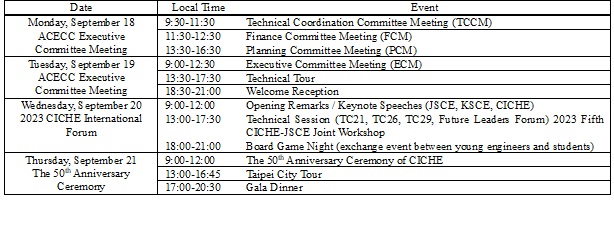
Table 1: Schedules of the ECM and CICHE 50th Anniversary Ceremony
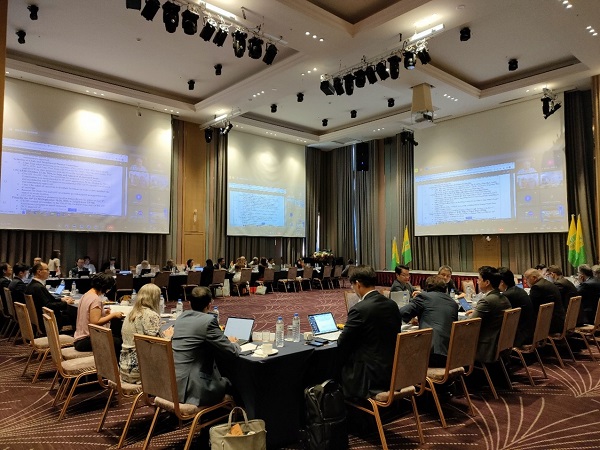
ACECC ECM
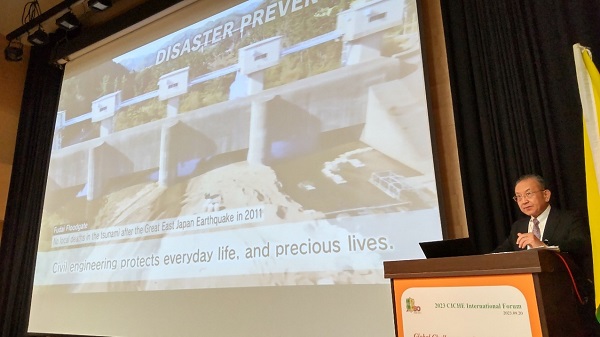
Presentation by President Tanaka at the CICHE International Forum
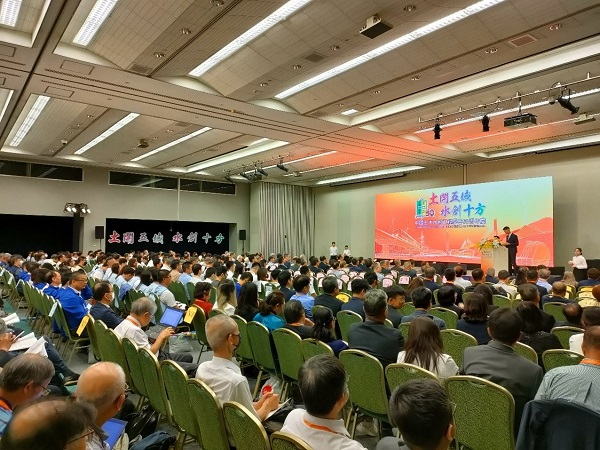
The 50th Anniversary Ceremony in Taiwan
【Reported by Masashi Inoue, Secretary-General, the Committee on Asian Civil Engineering Coordinating Council, JSCE】
Updates
◆Japanese Language Salon “How Learning Japanese Helped Me”(January 20)
https://www.facebook.com/permalink.php?story_fbid=pfbid03gN8fC2hCwqC1hxH...
・Registration Form:
https://docs.google.com/forms/d/e/1FAIpQLSeBRWqpyUQaSpE4lBjKqLhU9ZcWv6lz...
◆The International Infrastructure Archives – A Compilation of Japan’s Greatest Projects in Transfer of Civil Engineering Technology in Service –
http://www.jsce.or.jp/e/archive/
◆Infrastructure System Resilience: An Engineering Framework for Assessment, Management, and Governance
https://ascelibrary.org/doi/10.1061/9780784485088
◆IAC “News Pick Up!!” on the JSCE Japanese website
https://committees.jsce.or.jp/kokusai/iac_dayori_2024
◆Call for JSCE Award Nominations: “International Lifetime Contribution Award” and “International Outstanding Collaboration Award”
https://committees.jsce.or.jp/kouken_sho/R5_English
◆【YouTube】 Civil Engineering, in Your own Words (Full ver.)
https://youtu.be/r1Dc37kABXM?feature=shared
◆JSCE Concrete Committee International Newsletter No. 69
https://www.jsce.or.jp/committee/concrete/e/newsletter/newsletter69/inde...
◆2023 Civil Engineering Design Prize, JSCE
http://design-prize.sakura.ne.jp/
◆Summary of featured articles in JSCE Magazine Vol. 109, No.1, January 2024
http://www.jsce-int.org/pub/magazine
◆Journal of JSCE
https://www.jstage.jst.go.jp/browse/journalofjsce
◆Call for Papers: Advances in AI, Data Science and Digital Twin
https://committees.jsce.or.jp/struct1002/node/36
◆Safe and Healthy Work in the Digital Age 2023-2025 Campaign
https://healthy-workplaces.osha.europa.eu/en/media-centre/events/launch-...
◆【YouTube】 Taiwan Public Infrastructure Archives: Public Water Supply Series
https://youtu.be/mMMvODevd_Q?feature=shared
◆CECAR10:http://www.cecar10.org/
◆ACECC Future Leaders Group (FLG) September Newsletter
https://drive.google.com/file/d/1IXG5SJs9Sv37NVAwVYI0EoEV60W5-Bdl/view?u...
◆ECCE E-Journal 27 - December 2023:https://www.dropbox.com/scl/fi/onj627vtjy4cb7rip18d5/ECCE-E-journal-27.p...
Subscription
The IAC News is one of the communication tools to share information and ideas with the members. We would like to invite you, your friends and colleagues to join the communication and to subscribe the IAC News. Please register online: (http://www.jsce-int.org/node/150). We look forward to meeting you.
